#Hermann Grimm
Text
Roma ~ Werner Bergengruen · [1]
PIAZZA DI SPAGNA con la fontana della « Barcaccia » di Pietro Bernini (1562-1629) e la scalinata che conduce alla chiesa di Trinità dei Monti
Precarietà ed immortalità di Roma quasi si toccano, anzi si fondono come in nessun’altra città al mondo. Si toccano e si fondono l’allegria e la tristezza, il frastuono ed il silenzio, la fretta e la calma, l’angustia e la larghezza che diventa quasi…
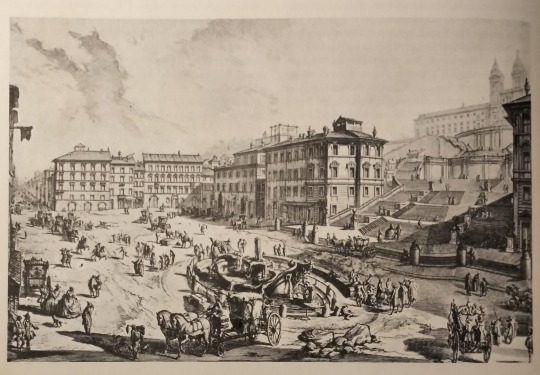
View On WordPress
#Ferdinand Gregorovius#Franz Xaver Kraus#Giovanni Battista Piranesi#Goethe#Hermann Grimm#Jean Paul#Roma#Werner Bergengruen
0 notes
Text
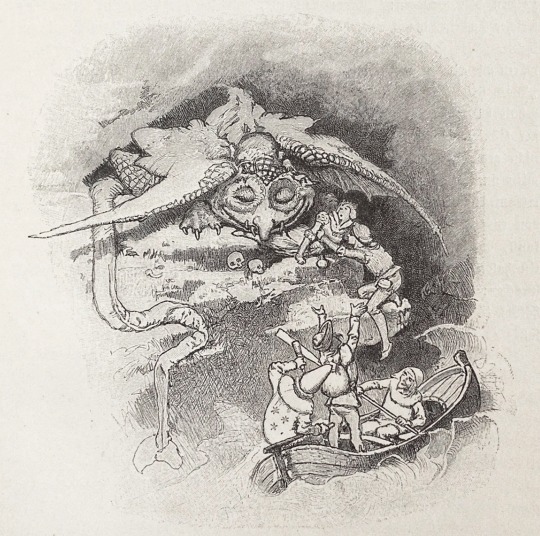
Kinder und Hausmaerchen der Brueder Grimm (sic)
Ca. 1895
Artist : Hermann Vogel
#antique book#children's literature#fairy tale#children's books#children's illustration#vintage illustration#fairy story#children's book#fairy tales#old illustration#fairy#old book#the brothers grimm#circa 1895#hermann vogel#engraving#monster
359 notes
·
View notes
Text


Cinderella (1893) - Hermann Vogel
38 notes
·
View notes
Photo

Illustration of the Brothers Grimm Fairytale :
The Tale of a Youth who set out to learn what fear was.Illustration by Hermann Vogel
216 notes
·
View notes
Text
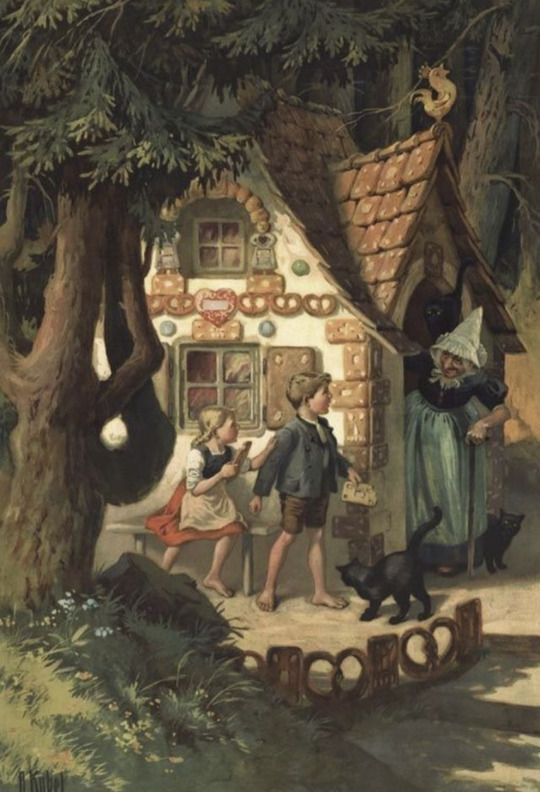
youtube
#HÄNSEL UND GRETEL by GRIMM‘S TALES - THE GINGERBREAD HOUSE
@samirafee
#fairy tales#hänsel und gretel#grimm brothers#gingerbread house#illustrator hermann vogel#music by michael kramer&allie feder#hänsel & gretel‘s lullaby#all is blind#a tale dark and grimm#october 2023#Youtube
11 notes
·
View notes
Text
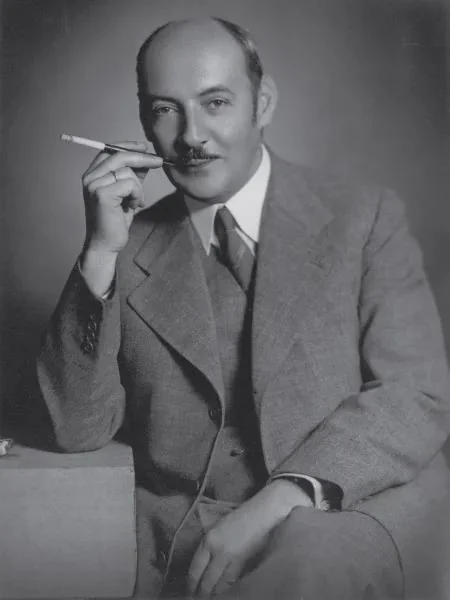
Albert Göring, hermano menor del infame Hermann Göring en 1940. Como director de exportaciones de Škoda Works, usaría su posición y la reputación de su hermano para salvar a cientos de judíos durante la Segunda Guerra Mundial, así como para evitar cuatro arrestos y una orden de muerte.
Albert Günther Göring (Friedenau, Berlín, Imperio alemán, 9 de marzo de 1895-Berlín, Alemania Occidental, 20 de diciembre de 1966) fue un empresario alemán, hermano de Hermann Göring y conocido por haber sido un acérrimo opositor a las prácticas del gobierno nazi.
Nació el 9 de marzo de 1895 en el suburbio berlinés de Friedenau. Fue el quinto hijo de un funcionario del Imperio Alemán que se desempeñó como Reichskommissar (puede traducirse como Comisario del Imperio) de África del Sudoeste Alemana (hoy Namibia) y como Cónsul General en Haití, Heinrich Ernst Göring y Franziska "Fanny" Tiefenbrunn. Su padre descendía de una familia judía de origen suizo convertida al cristianismo y su madre provenía de una familia rural de Baviera. Entre los parientes de Albert pueden encontrarse a Ferdinand von Zeppelin, a la familia Merck —fundadores de la empresa farmacéutica Merck KGaA—, a los historiadores Herman Grimm y Jacob Burckhardt y la escritora Gertrud von le Fort.
La familia de Albert vivía aristocráticamente gracias a la herencia que les dejó Ritter Hermann von Eppenstein, que incluía los castillos de Veldenstein y Mauterndorf.
Sus hermanos fueron Olga Theresa, Karl Ernst, Paula Elisabeth y, el mayor, Hermann Wilhelm, quien llegaría a ser el Comandante Supremo de la Luftwaffe y mano derecha de Adolf Hitler.
A diferencia de su hermano, Albert se vio influido por su padrino, von Eppenstein, quien era un hombre de mundo de modales aristocráticos. Gracias a su padrino, se rodeó de los círculos más selectos y fue miembro de hermandades y sociedades civiles y empresariales. Se dedicó a ser empresario, a la tertulia y a las artes. En 1932 comenzó con una serie de cortometrajes sobre la caída del Imperio Alemán y la biografía de Guillermo II de Alemania, pero ante el ascenso del nazismo tuvo que abandonar su iniciativa por ser considerada socialista.
A partir de la llegada al poder de Adolf Hitler, Albert Göring comenzó a participar en las campañas en contra del gobierno del partido nazi.
En 1933 formó parte de la protesta por el cierre de la Escuela de la Bauhaus.
El mismo año, se opuso a la limpieza forzada de banquetas por parte de un grupo de mujeres judías. Cuando el oficial de las SS a cargo lo detuvo, al reconocer su nombre, no queriendo ser el culpable de la humillación pública del hermano de Hermann Göring, lo dejó libre e hizo detener la limpieza.2Cuando Alemania se anexó Austria, una de las primeras empresas en expropiarse fue la Tobis-Sascha-Filmindustrie, la compañía cinematográfica más grande del país, de la que Oskar Pilzer era el presidente. Éste fue detenido en enero y entregado a la Gestapo por su ascendencia judía y, como había sido jefe, maestro y amigo de Albert durante su corta carrera como cineasta, él lo ayudó en marzo a escapar consiguiéndole una identificación falsa.
Las actividades de Albert iban demasiado lejos y no eran toleradas por el partido nazi. Es así que Víctor Lutze, siguiendo órdenes explícitas de Hitler, lo encarceló durante dos meses en la prisión de Viena.
Cuando iba a ser enviado al campo de concentración de Mauthausen, su hermano Hermann intervino y, aprovechando su experiencia como empresario e industrial, lo ubicó como director de exportaciones de Skodovy Zádovy (división de ensamblaje de Škoda), en Checoslovaquia, con la intención de alejarlo del escenario político alemán.
Durante su estancia en Checoslovaquia sus actos se volvieron más radicales. Desde su llegada hizo todo lo que pudo para sabotear la maquinaria del Reich, fabricando vehículos defectuosos, retrasando o desviando pedidos, y entregándolos incompletos.
Existen anécdotas que cuentan que Albert llegó a falsificar la firma de su hermano en varias ocasiones para liberar prisioneros o conmutarles la pena de muerte; que enviaba camiones al campo de concentración de Theresienstadt demandando mano de obra forzada para después soltarlos; obtenía documentos oficiales para trabajadores judíos y así poder hacerlos pasar por checos; facilitaba especificaciones de los vehículos que fabricaba a la resistencia y demás actos contra el nazismo.
Este tipo de actos le valieron la persecución del partido nazi, que le negó las dietas a las que tenía derecho por ser familiar de un alto mando del partido.
En el otoño de 1943 firmó los pasaportes de una familia judía para que pudiera salir del país.
En otro momento convenció al jefe de las SS Reinhard Heydrich de liberar algunos prisioneros de la resistencia checa de los sótanos de la Gestapo.
Cuando en mayo de 1945 el Reich cayó definitivamente, Albert Göring fue detenido por los checoslovacos pero pronto fue puesto en libertad.
Tiempo más tarde fue llamado por las autoridades de la Ocupación Aliada en Alemania para ser juzgado en Núremberg. Acudió, primero, al Juicio de Oswald Pohl, en el que no se le condenó por falta de pruebas. También fue llamado al Juicio de IG Farben, donde aportó numerosos testimonios y una lista con 34 judíos a los que ayudó a escapar de la Gestapo, de las SS y de campos de concentración, y del que también fue absuelto.
A pesar de su ayuda, fue declarado culpable de haber obtenido una ganancia de 7.000 Reichsmarks en la fábrica Skoda con mano de obra esclavizada y condenado a dos años en la prisión estatal de Berlín, de donde salió en noviembre de 1947 encontrándose con que los bienes de la familia Göring habían sido embargados por el gobierno de Alemania Federal.
El encontrarse sin nada provocó un derrumbe en Albert, que se volcó al descuido y la bebida, sin llegar a conseguir un trabajo importante dentro de la Alemania Occidental. Trabajó como escritor, dibujante o traductor, pero siempre esporádicamente y muy mal pagado.
A pesar de los consejos de su amigo Ernst Kassler, Albert nunca accedió a cambiarse el nombre argumentando que aun sin su apellido, los Göring eran bien reconocidos en Alemania, Austria y Suiza, sin tener que presentarse.
En 1952, el gobierno alemán le concedió una pensión de 82 marcos alemanes mensuales ―equivalentes a unos 95 dólares actuales― por edad avanzada y desempleo. Desde entonces, y hasta su muerte, Albert vivió en un viejo apartamento en el centro de Berlín, con una casera con la que contrajo matrimonio pocos días antes de su muerte para que ella pudiera disponer de la pensión que el gobierno le otorgaba.
Albert Göring falleció el 20 de diciembre de 1966. Sus restos se encuentran en un cementerio en las afueras de Múnich
6 notes
·
View notes
Text
"RWBY": The Captivating YA Animated Series
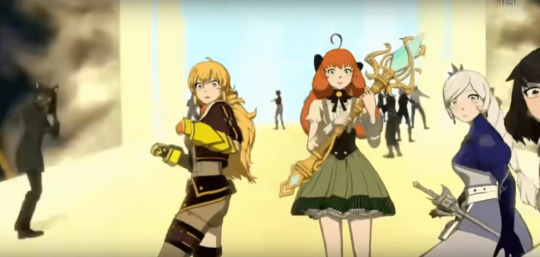
Yang, Penny, Weiss, and Blake at the end of Volume 8
Last year, when looking for another animated series to watch, I came across RWBY, a young adult animation, and one of Rooster Teeth's flagship series. While I wasn't sure about it at first, as I watched all eight seasons, I became invested in the characters, especially the protagonists, and a fan of the show itself.
Reprinted from The Geekiary, History Hermann WordPress blog, and Wayback Machine. This was the fourth article I wrote for The Geekiary. Before this got published, they said I would be kicked off the publication if I don't start writing, if I remember right. So, I started writing this post and many others. This post was originally published on October 8, 2021.
RWBY is the brainchild of the late Monty Oum. It is known for its captivating stories and a theme song, sung by Casey Lee Williams, which begins every episode, foreshadowing what happens in the season/volume. Although the series has the classic conflict of good vs. evil, there are well-developed characters with intricate storylines, elements of horror, and good character development. Some characters are even morally grey, like General James Ironwood or the Ace Ops. Other villains, such as Cinder Fall, don't want to strictly follow their leader.

Ruby in Volume 9 preview
The anime-inspired series is named after the four main protagonists: Ruby Rose, Weiss Schnee, Blake Belladonna, and Yang Xiao Long. They stand against villains, such as Salem and her enforcers, like Cinder, Arthur Watts, Neopolitan, Tyrian Callows, Mercury Black, and the Grimm monsters. On the other hand, Ozma/Ozpin/Oscar Pine, Lie Ren, Nora Valkyrie, Qrow Branwen, Robyn Hill, and Jaune Arc, among others, help Ruby, Weiss, Blake, and Yang fight against the forces of evil.
The show is clearly mature as it features its share of blood and gore, and the death of some characters, with the antagonist, Salem, even engaging in human experimentation. On the other hand, this science fantasy/adventure/action series has a large focus on magic, and sci-fi elements like the cyborg girl, Penny Polendina, and scrolls which can receive and record messages. Each of the protagonists, like those on RWBY, have a semblance which derives from their aura, helping them battle against the Grimm and other villains, either including powers such as object manipulation, disorienting people, or super strength.
I don't want to give away too much of the plot but I will say that the show features various supporting LGBTQ characters. In Volume 6, Saphron and Terra-Arc, a lesbian couple with a son named Adrian, as confirmed by Lindsay Jones, the voice of Ruby, who the protagonists, and their friends, stay with on their journey to another kingdom. Additionally, in the Volume 5 episode "Alone Together," Ilia Amitola confessed her romantic feelings to Blake, and was later confirmed by show writer Miles Luna as a lesbian in a Reddit AMA.
Most prominently is May Marigold, a trans woman. Unlike other trans characters in animation, she is voiced by a trans female voice actress, Kdin Jenzen, and her character came out as trans in the Volume 8 episode "War," which she described as "something so wildly powerful & meaningful."

LGBTQ characters in RWBY so far
There is a lot about the series which is wonderful. There is a strong possibility of confirmed LGBTQ representation in the main cast, especially since the voice actress for Blake, Arryn Zech, confirmed her character as bisexual in May 2020, and some even have argued that the shipping between Blake and Yang, known as Bumbleby, will come become canon in the show's next volume.
Even if this doesn't happen, the show is still powerful, from its music to the characters, the voice acting to the visuals, which have improved from the earliest seasons to the present-day. Although the fandom may be toxic at times, the show is unique in its colorful ship names, especially the femslash ones, like Baked Alaska (Yang and Neopolitan), Blood Mint (Ruby and Emerald Sustrai), Freezerburn (Yang and Weiss), Ladybug (Ruby and Blake), or White Rose (Ruby and Weiss) to name a few.
So, if you haven't seen RWBY yet, whether on VRV, Crunchyroll, Amazon Prime (in some locations), YouTube Movies (for purchase/rent), or on the RoosterTeeth website, now is the perfect time during the show's hiatus, before Volume 9 begins again sometime in 2022.
© 2021-2023 Burkely Hermann. All rights reserved.
60 notes
·
View notes
Text
‧₊˚ ☁️⋅♡𓂃 ࣪ plush collection ☾.🌱⋆࿔*:・🌿<𝟑
🌲 Faron // webkinz signature timber wolf // ♂️// adopted: April 2023
🌲 Seymour // jellycat bashful wolf // ♂️// adopted: June 2023
🌲 Sunny // jellycat smudge bear // ♂️ // adopted: April 2023
🌲 Cassini // jellycat milo shiba Inu // ♂️// adopted: June 2023
🌲 Wilder // jellycat wumper tiger // ♂️// adopted: August 2023
🌲 Strawberry // jellycat smudge bunny // ♀ // adopted: September 2023
🌲 Goose // Teddy Hermann Australian shepherd //♂️// adopted: October 2023
🌲 Dawn // jellycat bashful bun beige // ♀ // adopted: November 2022
🌲Thorfinn // webkinz signature husky //♂️// adopted: February 2024
🌲 Cattail // jellycat smudge fox //♂️// adopted: August 2023
🌲 Feldspar // jellycat Beckett fox //♂️// adopted: March 2024
🌲 Charon // prime Shiba blue bay shepherd //♂️// adopted: November 2023
🌲 Locket // prime Shiba panda gshep // ♀ // adopted: December 2023
🌲 Fossil // handmade //♂️// adopted: March 2024
🌲 Hollow // wwf Anna’s club dark red fox //♂️// adopted: February 2024
🌲Neo // jellycat Fergus frog //♂️// adopted: January 2024
🌲 Tidepool // jellycat bashful snow tiger //♂️// adopted: February 2024
🌲Charlie // jellycat cheetah // ♀ // adopted: February 2024
🌲 Achilles // semo wolf //♂️// adopted: January 2024
🌲 Elderberry // jellycat plum bun //♂️// adopted: January 2024
🌲 Harvest // webkinz signature golden retriever //♂️// adopted February 2024
🌲 West // prime shiba wolf dog //♂️// adopted: July 2023
🌲 Kismet // prime shiba red husky //♂️// adopted: November 2023
🌲 Whisper // jellycat lavender dragon // ♀ // adopted: February 2024
🌲 Pebbles // shinada global grey otter //♂️// adopted: February 2024
🌲 Zip // Ty beanie babies // ♀ // adopted: March 2024
🌲Grimm // jellycat wilderness wolf //♂️// adopted: December 2023
🌲 Link // handmade //♂️// adopted: March 2024
🌲 Solanum // jellycat bashful goat // ♀ // adopted: March 2024
🌲 Ronan // webkinz signature cocker spaniel //♂️// adopted: March 2024
🌲 Fenrir // handmade //♂️// adopted: April 2024
🌲 Luffy // webkinz signature gshep //♂️// adopted: April 2024
🌲 Ronic // steiff snorry wolf //♂️// adopted: April 2024
🌲 Firefly // jellycat smudge fox //♂️// adopted: April 2024
🌲 Clover // prime Shiba Kai Ken //♂️// adopted: April 2024
2 notes
·
View notes
Text
Khám Phá Đất Nước Của Trí Tuệ - Du Học Đức

I. Lịch sử nước đức
Lịch sử của nước Đức rất phong phú và đa dạng, bắt đầu từ thời kỳ tiền lịch sử với sự hiện diện của các bộ tộc Germanic. Dưới đây là một cái nhìn tổng quan về lịch sử của Đức qua các giai đoạn chính:
1. Thời kỳ tiền lịch sử: Khu vực của nước Đức ngày nay từng là một phần của các bộ tộc Germanic như Quadi, Marcomanni, và Teutons. Các bộ tộc này có ảnh hưởng sâu rộng đến văn hóa và lịch sử của vùng này.
2. Thời Trung cổ và Đế quốc La Mã Sacrusa: Sau khi Đế quốc La Mã sụp đổ, các bộ tộc Germanic nắm quyền và hình thành các quốc gia và lãnh thổ riêng của họ. Trong thế kỷ IX, Otto I của Đế quốc Sacrusa (còn gọi là Đế quốc La Mã Thần thánh) thống nhất một phần lớn của Đức hiện đại và trở thành Hoàng đế.
3. Thời kỳ Trung cổ muộn và Thời kỳ phục hưng (1400-1600): Các quốc gia và vương quốc nhỏ hình thành và chiến đấu với nhau để giành quyền kiểm soát. Trong giai đoạn này, phong trào cải cách của Martin Luther đã bắt đầu, dẫn đến sự chia rẽ tôn giáo và các cuộc chiến tranh tôn giáo, đặc biệt là Chiến tranh Ba mươi Năm.
4. Thời kỳ cổ điển và Thời kỳ đế chế (1700-1806): Phong trào cải cách và sự phát triển kinh tế đã tạo điều kiện cho sự mở rộng của các quốc gia như Prussia và Áo. Trong giai đoạn này, Frederich II của Prussia, hay còn được gọi là Frederich Đại đế, đã thực hiện các biện pháp cải cách và mở rộng lãnh thổ.
5. Thế chiến I và Thế chiến II: Đức đóng một vai trò quan trọng trong cả hai cuộc chiến tranh thế giới, với sự lên nắm quyền của Đảng Quốc xã dưới sự lãnh đạo của Adolf Hitler trong Thế chiến II, dẫn đến các hậu quả đại trà đối với đất nước và toàn cầu.
6. Sau Thế chiến II và sự thống nhất (1945-1990): Đức đã chia cắt thành hai phần, với Cộng hòa Liên bang Đức (Tây Đức) và Cộng hòa Dân chủ Đức (Đông Đức). Việc thống nhất Đức vào năm 1990 đã làm thay đổi bức tranh chính trị của châu Âu.
7. Hiện đại: Sau thống nhất, Đức đã trở thành một trong những quốc gia mạnh mẽ và ảnh hưởng nhất châu Âu, là thành viên của Liên minh châu Âu và NATO, đồng thời là một trong những nền kinh tế lớn nhất thế giới.
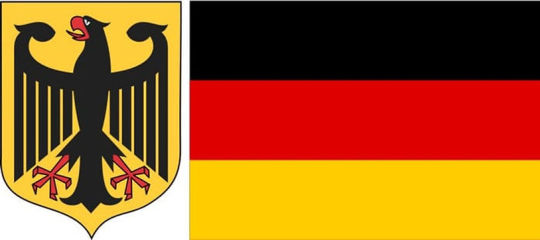
II. Biểu tượng nước đức
Nước Đức có nhiều biểu tượng quan trọng, bao gồm cả biểu tượng quốc gia và các biểu tượng văn hóa, lịch sử. Dưới đây là một số biểu tượng nước Đức đặc trưng:
1. Cờ Đức: Cờ Đức có ba dải ngang màu đen, đỏ và vàng. Cờ này đã trở thành biểu tượng quốc gia của Đức từ khi thống nhất năm 1871 và được sử dụng cho cả Đông và Tây Đức sau khi nước này thống nhất lại vào năm 1990.
2. Huy hiệu liên bang Đức: Huy hiệu liên bang Đức bao gồm một con đại bàng màu vàng trên nền màu đen đặt trên một hình tròn màu đỏ. Đây là biểu tượng chính thức của chính phủ liên bang Đức.
3. Bức tượng đại bàng: Đại bàng là một biểu tượng quan trọng của Đức, thường được sử dụng để đại diện cho sức mạnh và uy quyền. Nó thường được sử dụng trong nghệ thuật, kiến trúc và cả trong huy hiệu của một số tỉnh.
4. Các công trình kiến trúc lịch sử: Đức có nhiều công trình kiến trúc lịch sử nổi tiếng như Cung điện Reichstag ở Berlin, Lâu đài Neuschwanstein ở Bayern, Cổng Brandenburg ở Berlin, và nhiều nhà thờ cổ và lâu đài khác.
5. Các biểu tượng văn hóa: Nước Đức cũng có nhiều biểu tượng văn hóa nổi tiếng như bia Oktoberfest, đồng hồ Cuckoo, những bài hát dân ca và các câu chuyện cổ tích như câu chuyện của anh em Grimm.

III. Diện tích nước đức
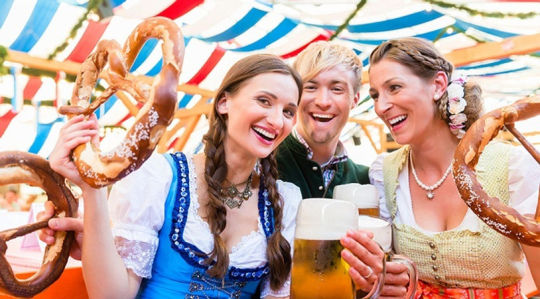
IV. Văn hóa nước đức
Văn hóa của Đức là một phần quan trọng của di sản văn hóa thế giới, đóng góp đa dạng và giàu có vào sự phát triển của nền văn hóa toàn cầu. Dưới đây là một số điểm nổi bật của văn hóa nước Đức:
1. Ngôn ngữ và văn học: Tiếng Đức là ngôn ngữ chính thức và được nói rộng rãi ở Đức. Văn học Đức có một lịch sử lâu dài và phong phú, từ các tác phẩm của Goethe, Schiller, Kafka, Nietzsche đến các tác phẩm hiện đại của Günter Grass, Hermann Hesse, và Thomas Mann.
2. Âm nhạc: Đức là quê hương của nhiều nhà soạn nhạc và nhạc sĩ nổi tiếng như Ludwig van Beethoven, Johann Sebastian Bach, Wolfgang Amadeus Mozart (người sống tại thành phố Salzburg, nay thuộc nước Áo, nhưng sinh ra ở Leipzig, Đức), và Richard Wagner. Nước Đức cũng có một truyền thống dày đặc trong các thể loại như nhạc cổ điển, nhạc dân gian và nhạc điện tử.
3. Kiến trúc và nghệ thuật: Đức có một lịch sử kiến trúc và nghệ thuật đa dạng, từ các công trình kiến trúc cổ điển như lâu đài và nhà thờ Gothic cho đến các trường phái nghệ thuật hiện đại như Bauhaus và dòng chảy hậu cảm biến đổi.
4. Bia và lễ hội: Đức nổi tiếng với nền văn hóa bia của mình. Oktoberfest ở Munich là một trong những lễ hội bia nổi tiếng nhất thế giới, thu hút hàng triệu du khách mỗi năm. Ngoài ra, còn có các lễ hội bia khác và các lễ hội dân gian khác trên khắp Đức.
5. Thể thao: Bóng đá là một phần quan trọng của văn hóa thể thao ở Đức, với Bundesliga (hạng đấu cao nhất) được coi là một trong những giải đấu hàng đầu thế giới. Các môn thể thao khác như bóng rổ, bóng chuyền và điền kinh cũng rất phổ biến ở Đức.
6. Văn hóa ẩm thực: Ẩm thực Đức đa dạng và phong phú, từ các món ăn truyền thống như Bratwurst (xúc xích chiên) và Sauerkraut (bắp cải chua) đến các món ăn đặc trưng của các vùng địa lý khác nhau trong nước.

V. Kết luận
Đức không chỉ là một điểm đến của công nghệ và kinh tế mà còn là một điểm đến tinh tế và đầy màu sắc. Nếu bạn cũng bị cuốn hút bởi những nét văn hoá nước Đức đa dạng và muốn trải nghiệm nền văn hoá này, bạn muốn du học Đức, du học nghề Đức nhưng chưa biết phải bắt đầu từ đâu? Liên hệ ngay với Clevermann để được tư vấn miễn phí bởi đội ngũ chuyên gia.
2 notes
·
View notes
Note
Since you have an education with Scandinavian folklore, I'd be curious to hear if you have any book reccomendations on Scandinavian Folklore? It's a topic I adore but I find that sources are a bit of a struggle to dig up.
I can read English, Norwegian, Danish (and tentatively with a lot of struggling and swearing) Swedish, so don't worry too much about the dreaded language barrier too much. :>
Hello hello! Thanks for asking! Pardon the late response as well, I wanted to compile a decent list as best as possible! Apologies in advance that I couldn't find easy links for most of them.
Introductory Books:
Vaesen (2013, originally in Swedish) by Johan Egerkrams (I have an English translation by Susan Beard). A beautifully drawn catalog of common Scandinavian folklore creatures. The downside of this book is the lack of direct source quotations and/or super in-depth folkloric analysis. Still a lovely easy read to familiarize yourself with some creatures!
Scandinavian Mythology: An Annotated Bibliography (1988, English) by John Lindow. Simple guide to Scandinavian mythological terms. If I'm remembering correctly, it focuses more on Norse mythological creatures (such as gods and giants) but also features explainers for folk belief figures.
Scandinavia Folk Belief and Legend (1988, English) by Reimund Kvideland and Henning K Sehmsdorf. A very detailed (and chunky!) book that focuses on folkloric beliefs and "old wives' tales" within Scandinavia. It has a lot of citations and references to folklore catalogs, which can then be used for further reading! Also, nicely organized to focus on generalized motifs.
Grimm's Fairy Tales (original German Title: Kinder- und Hausmärchen) by Jacob and Wilhelm Grimm (1812, German but with widely available translations.) While not exactly specifically Scandinavian Folklore, the Grimm brothers and their folklore collections did great work within the field of Germanic folkloric studies and comparative religious/folklore studies. (And if you're a linguist too, we love love love Jacob Grimm) Anyways, there are a million versions of these tales, some very watered down but if you're looking for a chance to read them here's a link (in English and German). The site is a bit clunky and doesn't have ALL the tales. But a good portion of them are available to read. It's good to familiarize yourself with these in general because of the motif commonalities in folklore studies.
More In-Depth Books:
Old Norse Mythology-Comparative Perspectives (2017, English) with Pernille Hermann, Stephen A. Mitchell, and Jens Peter Schjødt, eds., with Amber J. Rose. 2017. An anthology of scholarly articles focusing on discourse within the field of Scandinavian (Norse) religion and folklore studies. Lots of different authors and scholars, some with incredibly specific article focuses but others with more broad analysis and literature reviews. If you need a link, Harvard University seems to have one and it should work if I link it here.
The Norns in Old Norse Mythology (2013, English) by Karen Bek Pedersen. This book hyper-focuses on the Norns within the larger context of Norse mythology and Scandinavian folklore. I highly recommend this book for people who are confused by the various female supernatural figures and their various names and titles. Though it has a specific focus, it is still helpful for overall studies on dísir, nornir, vættir, etc.
Folklore in Old Norse: Old Norse in Folklore (2013, English) edited by Karen Bek Pedersen and Daniel Sävborg. A relatively short book that focuses on literary and medieval textual criticisms about current scholarly trends within the field. Very helpful for understanding scholarly trends as well as bodies of thought in the field of Scandinavian studies--which is always useful for students and newbie researchers!
Witchcraft and Magic in the Nordic Middle Ages (2011, English) by Stephen Mitchell. This book can be helpful in its discussion about the ambiguities between folklore, religion, magic, and witchcraft within the Scandinavian context. It references a lot of primary sources as well as historical sources commenting on said primary sources. It focuses mainly on the transition between Norse paganism to Christianity in Scandinavia but still, I think this book serves as a helpful introduction to understanding how folkloric practices change throughout time for various reasons.
Additional Miscellany Sources:
Motif-Index of Folk-Literature....(6 vols. revised and expanded from 1952-1958, English) by Stith Thompson. This is the compendium for folklore studies and is one of many folklore motif catalogs. Very helpful for understanding folklore in a broader comparative context. Unfortunately, it's very hard to find copies of the volumes, at least for me, but there is a digital link here.
Old Norse Folklore: Traditional, Innovation, and Performance in Medieval Scandinavia (English, 2023 pending release) (edited?) by Stephen Mitchell. This book isn't out yet so I can't comment too much on its content! But in the field, we are waiting to read it! According to the synopsis, it is an anthological book that will feature essays (mainly theoretical) that focus on the transition of mythological and folkloric material in the medium of orality. Hopefully, this book will serve as a good guide to understanding how to connect orality theory (in broader Scandinavian lit. studies) to folkloric motif studies (in Scandinavian folklore studies).
Some Scholars I Recommend:
Pernille Hermann, PhD. Focuses a lot on memory studies and literacy in Medieval Scandinavia. Writes in English and Danish.
Karen Bek Pedersen, PhD. Focuses on in-depth discussions of fate motifs in Norse sagas and mythological texts. Also frequently focuses on female folkloric figures in Scandinavian religion. I believe she writes English and Danish.
Daniel Sävborg, PhD. Focuses on comparative literature studies and somewhat psychological looks into Norse literature and motifs. Writes in English and in Swedish.
Stephen Mitchell, PhD. Focuses on various genres of Norse/Nordic literature with interests in magic, mythology, and legends. Writes in English, I don't know if any other languages.
Thanks for the ask! Hopefully this is helpful! 🖤
Most of the books are in English, since these are the texts my classes focused on specifically and my program is taught in English. It might take me a bit longer to find (throughout my laptop files) the non-English ones we read!
As always, research carefully! There are a lot of people with no academic background writing in this subject and getting popularized. And there is also a danger of people using this subject to promote false and dangerous ideologies. (ahem Nordal).
#folklorist#norse studies#norse folklore#scandinavian mythology#scandinavian folklore#folklore studies#comparative folklore#mythology#dark academia#academia#book list
9 notes
·
View notes
Text
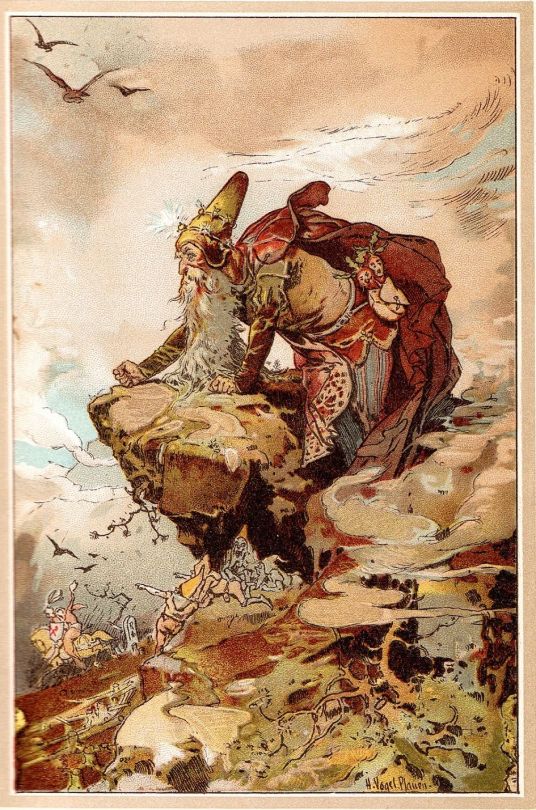
Hermann Vogel - Illustration for a tale by brothers Jacob and Wilhelm Grimm.
4 notes
·
View notes
Text
We saw Tom Stoppard's "Leopoldstadt" on Broadway last night. We hadn't rushed to see this, but discounted tickets made it irresistible. At this point I am increasingly reluctant to see or read more on the Shoah, due as much to arrogance that I've already "seen it all" (impossible) as to an aversion with age to borderline torture porn. Previously, the exhibition "Auschwitz: Not Long Ago, Not Far Away" dissolved that reluctance: Our planned one-hour breeze-through became a three-hour endless revelation. But I am sorry to report that, while I am glad we saw it, I'm afraid Stoppard's play was a disappointment, more derivative pastiche than epiphany. I knew it was part biographical, which is also problematic: In the words of Mr. Popescu in Carol Reed's "The Third Man" (its Orson Welles given an almost sneering aside at one point in Stoppard's text): "A dangerous thing, mixing fact and fiction." I was also reminded of Elie Wiesel's criticism of the 1977 television series "Holocaust": Too many different Holocaust horrors happened to this fictional family, straining credulity and providing a boon to revisionists and deniers. Not that fiction is such a bad thing: I recommend highly the fantastic but harrowing and almost forgotten film "Sunshine" (1999) featuring a spectacular cast including Ralph Fiennes, Jennifer Ehle, Rachel Weisz, William Hurt, about three generations of a privileged Hungarian Jewish family. But I felt that the audience would be better off with true accounts, details of which almost seem to have been cherry-picked for inclusion in this play: The sweep of Edmund de Waal's "Hare with Amber Eyes"; the recent TCM documentary on Hollywood composer Max Steiner; another documentary featuring musician Billy Joel and his Viennese half brother about the Nazi theft of their family business; the story of Adele Bloch Bauer, subject of both a famous Klimt painting and the 2015 film "Woman in Gold." Beyond all that, and strictly from a dramaturgic point of view: Too long (two hours ten minutes) to have no intermission (esp. because I believe the script could have been tightened by a quarter hour), and too many characters with too little delineation. Great that the excellent scrim-projected photos throughout the play included a rough-drawn family tree; but at play's end, I was left to scramble mentally who was who. It would have been incredibly effective (if no doubt emotionally manipulative) to have a spotlight shone -- or a briefly held lamp passed, lit, extinguished -- one by one or two by two, on/by the actors portraying the family members whose grim fates are intoned by Rosa ("...Verdun...Auschwitz...Auschwitz...Auschwitz..."). The other issue was enunciation: So many semi-comprehensible posh accents -- not "foreign," all English -- that lines were missed. I had to tell my companion after the fact that both his parents' home towns of Lvov and Czernowitz had been mentioned. And would it have killed Stoppard to translate at least once "le gout juif," said several times at one point and sounding rather silly? There was also an Oskar Schindler crying moment toward the end by the character obviously modeled in Stoppard himself: Can't we please avoid all such lachrymose histrionics in future? Finally, Stoppard has textile magnate Hermann speak of making a suit out of nettles, has the nursemaid tell the Grimm fairy tale of the Six Swan prince brothers (Hans Andersen's version has seven) whose sister makes them shirts out of nettles: I would have liked more connection of those almost throwaway bits of script. Being innumerate and musically untalented, I bow to Stoppard's knowledge of the linked arts of music and mathematics -- although I do know about the Riemann Hypothesis, alleged proofs for which continue to come up in the news but which, as of this writing, are unsubstantiated. That might have been an interesting coda, perhaps a meditation on man's enduring ambition to achieve what may be impossible.
2 notes
·
View notes
Text
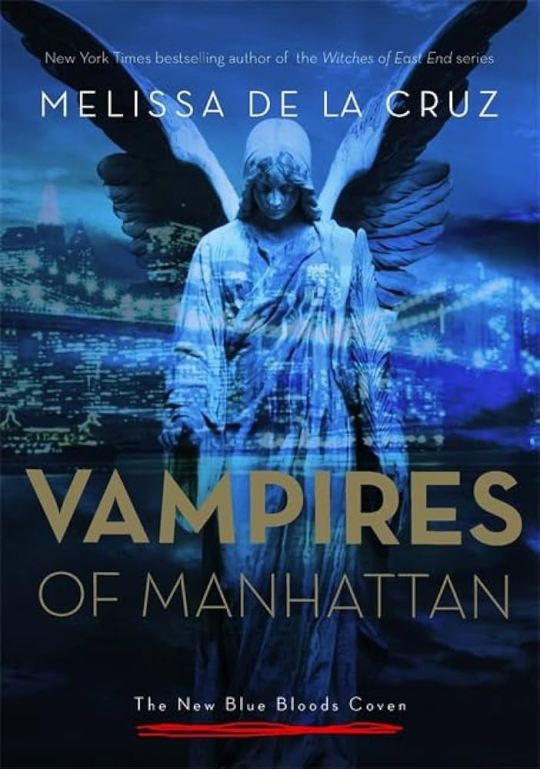


Antike (ca. 2000 vChr. bis ca. 500 nChr.)
Gilgamesch-Epos
Homer: Ilias, Odyssee
Äsop: Fabelsammlung
Caesar, Gaius Iulius: Der gallische Krieg
Vergil: Aeneis
Ovid: Metamorphosen
Tacitus, Publius Cornelius: Germania
Augustinus, Aurelius: Bekenntnisse
Herodot: Historien
Mittelalter (500-1500)
Beowulf
Murasaki Shikibu: Die Geschichte vom Prinzen Genji
1001 Nacht
Nibelungenlied
Gottfried von Straßburg: Tristan
Wolfram von Eschenbach: Parzival
Chaucer, Geoffrey: Die Canterbury-Erzählungen
Renaissance (1500-1600) und
Barock (1600-1720)
Boccaccio, Giovanni: Das Dekameron
Brant, Sebastian: Das Narrenschiff
Machiavelli, Niccolö: Der Fürst
More, Thomas: Utopia
Rabelais, Franois: Gargantua und Pantagruel
Cervantes Saavedra, Miguel de: Don Quijote
Grimmelshausen: Der Abentheurliche Simplicissimus Teutsch
Aufklärung (1720-1785)
Hobbes, Thomas: Leviathan
Fielding, Henry: Die Geschichte des Tom Jones, eines Findlings
Voltaire: Candide
Sterne, Laurence: Leben und Ansichten von Tristram Shandy, Gentleman
Rousseau, Jean-Jacques: Emile oder Über die Erziehung
Kant, Immanuel: Kritik der reinen Vernunft
Sturm und Drang (1765-1790)
Goethe, Johann Wolfgang von: Die Leiden des jungen Werthers
Bürger, Gottfried August: Münchhausen
Klassik (1786-1832)
Defoe, Daniel: Robinson Crusoe
Swift, Jonathan: Gullivers Reisen
Goethe, Johann Wolfgang von: Die Wahlverwandtschaften
Kleist, Heinrich von: Michael Kohlhaas
Romantik (1798-1835)
Arnim, Achim von/Brentano, Clemens: Des Knaben Wunderhorn
Grimm, Jacob und Wilhelm: Kinder- und Hausmärchen
Austen, Jane: Stolz undVorurteil
Eichendorff, Joseph Freiherr von: Aus dem Leben eines Taugenichts
Andersen, Hans Christian: Märchen
Gogol, Nikolai: Tote Seelen
Balzac, Honore de: Verlorene Illusionen, Glanz und Elend der Kurtisanen
Bronte, Charlotte: Jane Eyre
Bronte, Emily: Die Sturmhöhe
Huge, Victor: Die Elenden
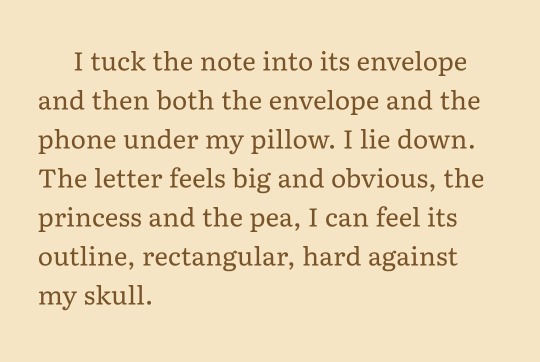
Biedermeier und Vormärz (1815-1848)
Heine, Heinrich: Buch der Lieder, Deutschland. Ein Wintermärchen
Büchner, Georg: Lenz
Droste-Hülshoff, Annette von: Die Judenbuche

Moderne (1850-1968)
Melville, Herman: Moby Dick
Beecher Stowe, Harriett: Onkel Toms Hütte
Keller, Gottfried: Dergrüne Heinrich
Dickens, Charles: Große Erwartungen
Dostojewski, Fjodor: Der Idiot
Tolstoi, Lew: Krieg und Frieden
Mark Twain: Tom Sawyers Abenteuer
Storm, Theodor: Der Schimmelreiter
Wilde, Oscar: Das Bildnis des Dorian Gray
Lagerlöf, Selma: Gösta Berling, Nils Holgersson
Fontane, Theodor: Effi Briest
Mann, Thomas: Buddenbrooks, Der Zauberberg
Proust, Marcel: Auf der Suche nach der verlorenen Zeit
Joyce, James: Ulysses
Babel, Isaak: Die Reiterarmee
Fitzgerald, Francis Scott: Der große Gatsby
Kafka, Franz: Der Prozess, Das Schloss
Woolf, Virginia: Mrs. Dalloway
Hesse, Hermann: Der Steppenwolf, Das Glasperlenspiel
Döblin, Alfred: Berlin Alexanderplatz
Remarque, Erich Maria: Im Westen nichts Neues
Roth, Joseph: Hiob, Radetzkymarsch
Traven, B.: Das Totenschiff
Fallada, Hans: Kleiner Mann - was nun?
Mann, Klaus: Mephisto
Steinbeck, John: Früchte des Zorns
Orwell, George: Farm der Tiere
Machfus, Nagib: Die Midaq-Gasse
Camus, Albert: Die Pest
Greene, Graham: Der dritte Mann
Dürrenmatt, Friedrich: Der Richter und sein Henker
Nabokov, Vladimir: Lolita
Tomasi di Lampedusa, Giuseppe: Der Leopard
Frisch, Max: Homo Faber
Aitmatow, Tschingis: Dshamilja
Grass, Günter: Die Blechtrommel
Solschenizyn, Alexander: Ein Tag im Leben des Iwan Denissowitsch
Wolf, Christa: Der geteilte Himmel
Bulgakow, Michail: Der Meister und Margarita
Garcia Märquez, Gabriel: Hundertjahre Einsamkeit

Gegenwart (ab 1968)
Lenz, Siegfried: Deutschstunde
Kertesz, Imre: Roman eines Schicksallosen
Eco, Umberto: Der Name der Rose
Jelinek, Elfriede: Die Klavierspielerin
Kundera, Milan: Die unerträgliche Leichtigkeit des Seins
Morrison, Toni: Menschenkind
Vargas Llosa, Mario: Das Fest des Ziegenbocks
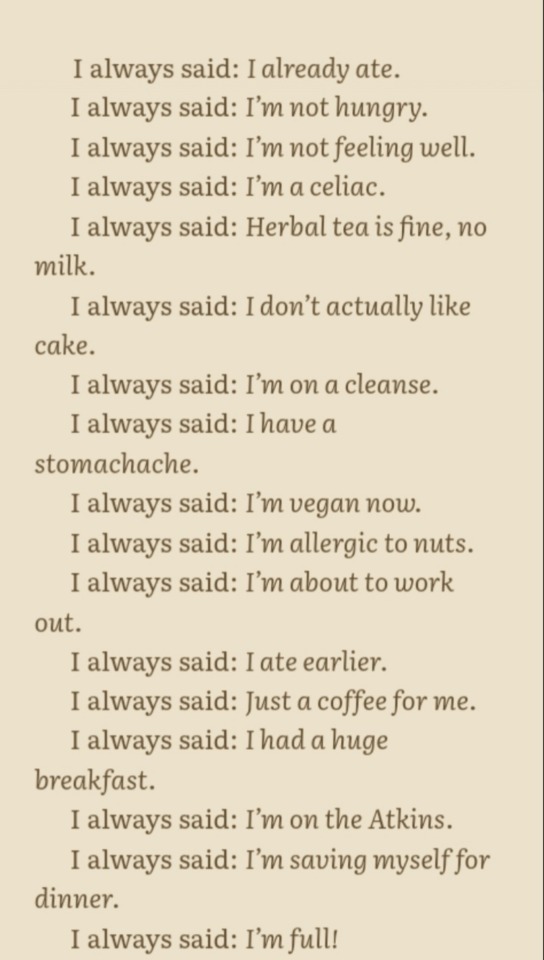
0 notes
Text

Frau Holle (1893) - Hermann Vogel
18 notes
·
View notes
Text

Überwachungsbilder
1.
Kontrolle und Zufall in der Cam Era, so schön und witzig nennt Thomas Hermann im Untertitel seinen Beitrag zur der Schriftenreihe Digitale Bildkulturen. Die Polizeistation Idstein hat eine Überwachungskamera, deren Bilder wurden letztens gelöscht, das fanden dann alle Verantwortlichen bei der Polizei schade bis bedauerlich, aufregend bis ärgerlich. Aber solche Bilder lassen sich rekonstruieren, oben sieht man einen Teil der Rekonstruktion. Das machen dann andere als die Polizeistation Idstein. Ooops, na haben wir ja gerade nochmal Glück gehabt und müssen nicht mehr bei Eyal Weizman und forensic architecture anrufen. Was man Überwachungskamera nennt, entpuppt sich in solchen Momenten als Unterwachungskamera, wie es luhmannistisch heißt.
2.
Die Reihe zu den Digitalen Bildkulturen vermehrt noch einmal die Thesen von der Bildvermehrung, noch einmal sollen die Bilder schon wieder wichtiger geworden sein. Das erinnert mich ein bisschen an Dieter Grimms Thesen zur Geschichte der Souveränität, wenn man da nicht genau aufpasst, dann verpasst man in den Wiederholungen des Auf- und Abstiegs, vor allem der Wanderschaften und der Pendelei den genauen Zeitpunkt und den Ort, seit dem und wo es Souveränität wirklich gab und wann und wo sie wirklich verschwunden ist.
Also jetzt zumindest soll der iconic turn wirklich stattgefunden haben, so die These der Herausgeber. Die These hat was, vor allem die Erklärung: durch Digitalisierung seien Bilder nicht mehr nur Bilder, sie würden nichtmehr nur zeigen und (ab-)bilden, sondern zum Beispiel auch zählen. Die Wende hat die Bilder zu wendigen Objekten gemacht.
Man kann diese Formulierung ("Iconic Turn") zweifach verstehen. Entweder versteht man Iconic Turn als Begriff für ein historisches Datum, an dem sich die Geschichte den Bildern zugewendet hätte, so verstehen vielleicht auch Kohout und Ullrich den Begriff. So verstehen ihn viele, auch Röhl zum Beispiel. Oder man versteht ihn als Begriff für eine Kulturtechnik, die mit Hilfe von Bildern etwas wendet, also als Begriff für ein Wenden, Kehren, Drehungen oder Kippen, die durch, an, mit und/oder gegen Bilder vollzogen werden.
Nehmen wir an, jemand wendet in einer Pfanne einen Pfannkuchen vorbildlich, dann wäre diese Wendung im zweiten Sinne ein iconic turn. Nehmen wir an, jemand stülpt seinen Mantel um, und das auch noch mit Augendienerei, also so, als ob Leute zuschauen, dann wäre auch das ein iconic turn. Nehmen wir an, eine Frau dreht sich um, blickt Dich an, während Du sie anblickst: Das wäre unbedingt ein iconic turn, aber nicht unbedingt ein historisches Ereignis.
Das eine Verständnis schließt das andere nicht aus. Man kann Kalender darüber führen, an welchen Tagen jemand bildlich etwas wendet, zeichnet man zur Zeit noch den Ort auf oder die involvierten Personen und Dinge, dann führt man schon Protokoll solcher Bildwendungen, Bilddrehungen, oder Bildkippen, die durch die Zeit gehen. Manchmal erzählen Leute eine Geschichte und drehen dann in der Geschichte etwas mit einem Bild, dann übersetzen sie vielleicht mit einem iconic turn den iconic turn so, wie die meisten iconic turn verstehen, nämlich als Zeitenwende (Röhl), die durch Bilder, in Bildern und mit Bildern und für Bilder sich ereignet haben soll.
Nur, weil Texte behaupten, die Bilder seien jetzt wirklich immer wichtiger geworden, sind die Texte nicht schlecht. Manche sind sogar gut. Der Text von Thomas Hermann ist sehr gut, auch weil er nochmal die Absurdität der Machtphantasien so schön ausbreitet, wie in der Bildgeschichte von Gottes Auge, das zwar alles sieht, aber nichts verhindern kann. Dafür braucht Gott schon Augendienerei. Will er bestimmen, braucht er eine Stimme. Hermann spricht von wohlklingenden Versprechen, die Macht der Bilder ist eines davon.
Nicht, dass es keine Macht gäbe, nur sie ins Bild zu verlegen ergibt ein Bild, das nicht jeden hypnotisiert. Man muss sich Bilder vielleicht wie Autoren denken. Sagt man ihnen, die seien sehr mächtig, dann ärgern sie sich so, wie wenn man Autoren sagt, ihre Texte seien sehr gut. Das könnte nämlich eine sehr hohle Beschreibung sein.
3.
Der Fall in Idstein ist nicht sehr gut. Er ist zu verfolgen.
#polizeistation idstein#symmetrisches polizeirecht#recht und bild#überwachungsbilder#überwachen und streamen
1 note
·
View note
Text
De-Globalisierung ist ein Holzweg, sagt Kanzler Scholz auf dem SZ-Wirtschaftsgipfel: Recht hat er @SZ_Wirtschaft
De-Globalisierung ist ein Holzweg, sagt Kanzler Scholz auf dem SZ-Wirtschaftsgipfel: Recht hat er @SZ_Wirtschaft
Siehe auch das Interview mit Professorin Veronika Grimm:
Und das Interview mit Hermann Simon:

View On WordPress
0 notes